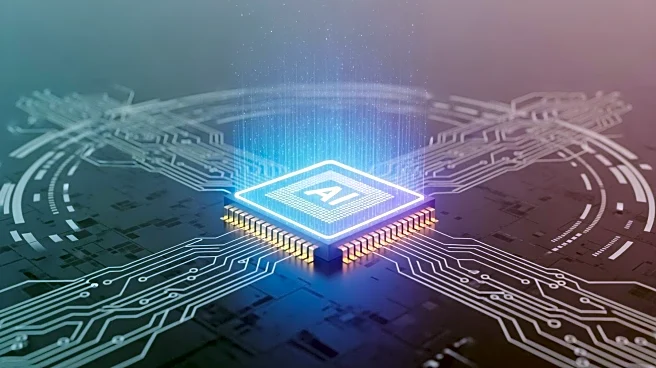What's Happening?
Intel's stock has experienced a significant surge in 2025, reaching its highest levels in over two years. This increase is largely attributed to a series of strategic investments and partnerships. The U.S. government has converted CHIPS Act grants into
a 9.9% stake in Intel, amounting to approximately $8.9 billion. Additionally, Nvidia has invested $5 billion, and SoftBank has contributed $2 billion. These investments have bolstered Intel's financial standing and sparked investor interest. Furthermore, Intel has announced a renewed focus on AI technology, unveiling a new AI data-center chip, 'Crescent Island,' which is optimized for energy-efficient inference performance. Despite these developments, Intel's financial results for Q2 2025 showed flat revenue and continued losses, with the company not expecting profitability until 2026.
Why It's Important?
The developments at Intel are significant for the U.S. semiconductor industry, as they reflect a strategic effort to bolster domestic chip production and innovation. The U.S. government's investment underscores the importance of maintaining a competitive edge in semiconductor manufacturing, particularly in the context of global supply chain challenges. Intel's partnerships with Nvidia and SoftBank highlight the growing importance of AI technology in the tech industry, as companies seek to capitalize on the increasing demand for AI-driven solutions. However, the cautious stance of analysts suggests that while these investments provide a financial boost, Intel must demonstrate tangible improvements in its operations and product offerings to sustain long-term growth.
What's Next?
Intel's future will depend on its ability to convert these strategic investments into operational success. The upcoming Q3 earnings report on October 23 will be closely watched for signs of progress in Intel's foundry business and AI initiatives. Additionally, the company's ability to secure significant fabrication contracts from major tech firms like Microsoft will be crucial in validating its turnaround strategy. Analysts remain cautious, with many predicting a potential pullback in stock prices if Intel fails to deliver on its promises. The broader semiconductor industry will also be monitoring Intel's efforts, as the company seeks to regain its competitive position amid a rapidly evolving market landscape.
Beyond the Headlines
Intel's resurgence highlights the complex interplay between government policy, corporate strategy, and technological innovation. The U.S. government's stake in Intel reflects a broader trend of state intervention in critical industries to ensure national security and economic stability. This move may set a precedent for future government involvement in the tech sector. Additionally, Intel's focus on AI technology aligns with global trends towards automation and data-driven decision-making, which could have far-reaching implications for various industries. The company's success or failure in this endeavor will likely influence the direction of AI development and adoption in the coming years.













